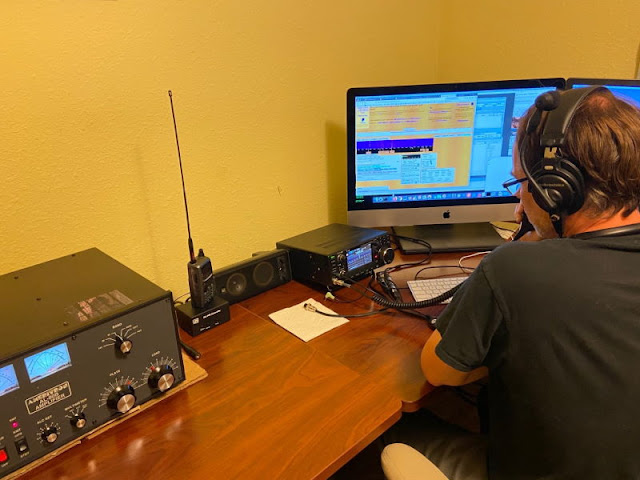Thanks to a reddit thread yesterday, and unbeknown to either of us until we met up on 40m SSB last night two Kiwis here in the US got chatting for near an hour.
Wife snagged a pic.
If that wasn't chance enough, 20 mins prior to that contact after I had finished tuning the AL-80B up I said my callsign once, and a KL7 near Fairbanks Alaska started calling me back, we managed a few overs before the band shut between WA and AK.
This comes after a good couple of weeks calling CQ on various bands and various times and getting .. well, nothing. I'm all for digi modes and all things new, but nothing beats getting putting on the headphones, vacuum tube amp with a 3-500Z anode glowing, antennas smoldering, and a couple of fun QSOs!
